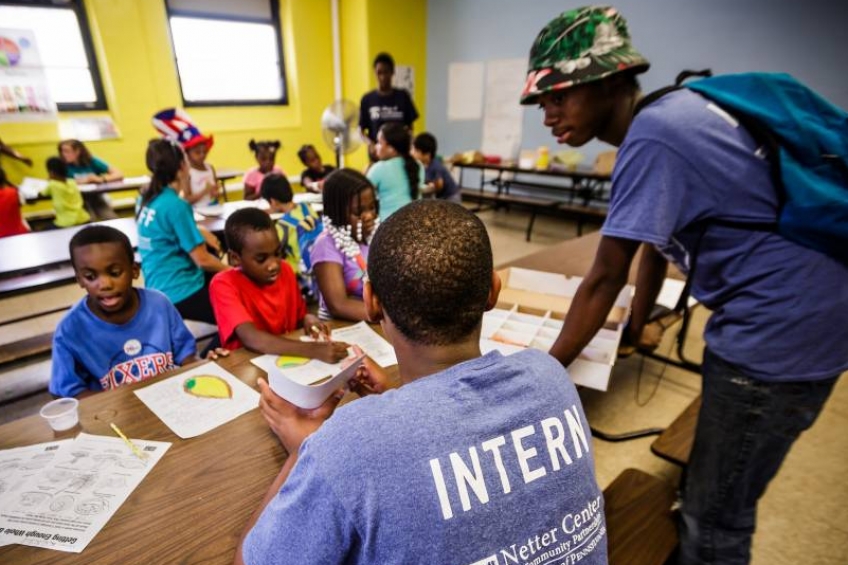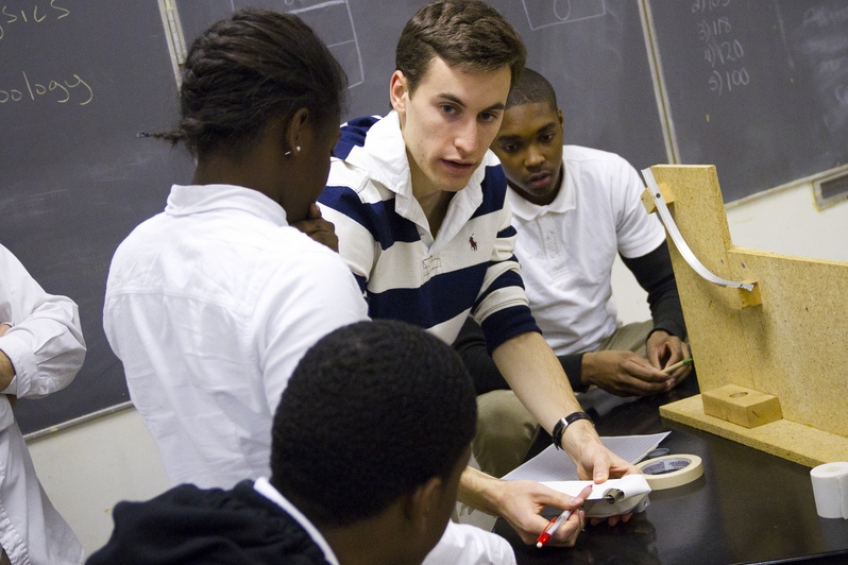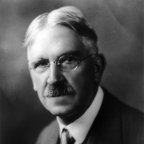University-Assisted Community Schools
A major component of the Netter Center's work is mobilizing the vast resources of the University of Pennsylvania to help traditional public schools become and function as innovative University-Assisted Community Schools (UACS).
A University-Assisted Community School (UACS) is a community school in which universities serve as the lead partner in providing broadly based, sustained support. Academic partnerships connect the university’s and school’s curricula through a focus on helping to solve local community-identified problems. This approach is designed to improve both the quality of life in the community and the quality of learning at all levels of schooling.
UACS, as well as community schools in general, are comprehensive neighborhood centers built on partnerships that educate, engage, activate and serve students, their families, and other members of the community. For neighborhood schools to function as community schools, they need additional human resources and support. Universities are particularly well-suited to be a lead partner in the creation, growth, and ongoing development of community schools, including providing academic, human, and material resources.
The Netter Center has more than thirty years of experience developing and adapting the University-Assisted Community Schools (UACS) model that was created with its school and community partners in West Philadelphia.

High school interns teaching nutrition education at Lea Elementary
,

Penn ABCS students in Community Physics Initiative course teach at local high school
,
Penn student and Comegys "cooking crew" student in UACS after school program
The Netter Center’s UACS work is based upon the core ideas developed by John Dewey in his 1902 essay, “The School as Social Centre.” Dewey’s essay was inspired by the work of Jane Addams and other settlement house leaders who recognized that while settlements were scattered, schools were everywhere and that they, therefore, could effectively function as centers for service provision, engagement, and community building.
As noted above, community schools are comprehensive neighborhood centers built on partnerships that educate, engage, activate and serve students, their families, and other members of the community. To be more specific:
A Community School is
- a comprehensive neighborhood center that educates, engages and serves, not only children, but all members of the community in which the school is located.
- an institution that educates students for democratic citizenship and serves as a catalyst for community change.
A Community School is built on
- democratic partnerships at and through the school – partnerships are the means for creating a community school.
A Community School contributes to
- improved student learning and development through a curriculum focused on real-world community problem solving.
- improved community wellbeing, including physical, behavioral and social health; environment; safety; housing; and college and career attainment, among others.
The Netter Center’s UACS programs in West Philadelphia include children and families at Comegys School (grades K-8), Hamilton School (K-8), Lea School (K-8), Mastery Charter School - Shoemaker Campus (7-12), Robeson High School, Sayre High School, and West Philadelphia High School. Additional partner schools (with more limited programming) include West Catholic High School, School of the Future, and John Bartram High School. UACS programming focuses on improving literacy, STEM, health and nutrition, social-emotional learning and mental wellness, arts and culture, sports and recreation, college access and career readiness, and neighborhood development. In addition to school-day partnerships, UACS programs operate before and after traditional school hours, including weekends and summers, for student, family, and community programs, such as adult education, recreation, and career development, as well as cultural events.
Netter Center UACS staff collaborate closely with each school and its community to help determine and coordinate activities that best serve that community school’s specific needs. UACS staff serve as liaisons between the University and the school, as well as between school day teachers and the after-school program. UACS programs are connected to the core mission of the university through Academically Based Community Service (ABCS) and other forms of community-engaged scholarship, in which service is integrated with research, teaching, and learning, and academic expertise is brought together with the expertise of the community. Netter Center staff coordinate and supervise the university’s academic and co-curricular partnerships at UACS, including thousands of Penn students engaged through ABCS courses, internships, community service work-study and volunteer opportunities. Netter’s UACS programs and initiatives are funded through government grants, private gifts, and university support.
Local context is, of course, critical for a university-assisted community school. Each higher education institution, public school, and community has unique needs, strengths, and resources. Based on the Netter Center's three decades of working with schools in our local community of West Philadelphia, as well as the experiences of colleagues across the country developing UACS, we nonetheless suggest that the following components tend to contribute to an optimally functioning university-assisted community school:
- A principal, teachers and staff who welcome the partnership and convey the UACS philosophy of collaborative learning and practice across the school and with partners.
- Student, family, teacher and broad community involvement, including through direct participation in community school programs, democratic decision making in program determination and operation, advisory boards and other mechanisms that help determine what partnership activities are needed and how they should be provided.
- In addition to school day partnerships, the school operates before and after traditional school hours, including weekends and summers, for student, family, and community uses, such as adult education, recreation, cultural events and family and community services.
- A coordinator at the university-assisted community school who is a link between the school, the community, and the higher education institution.
For more information on specific Netter UACS programs and activities, click on the menu items to the left or view our programs summary, as well as the below publications by Netter Center colleagues that detail the history and development of UACS.
For more information on the national UACS Network and UACS Regional Training Centers, visit our National and Global Outreach page here.
For Penn students who want to work with UACS programs, check out engagement opportunities HERE.
,
The following publications by Netter Center colleagues detail the history and development of University-Assisted Community Schools:
,
,
,
,


"The pressing thing, the significant thing, is really to make the school a social centre; that is a matter of practice, not of theory. Just what to do in order to make the schoolhouse a centre of full and adequate social service to bring it completely into the current of social life—such are the matters, I am sure, which really deserve the attention of the public and that occupy your own minds."
